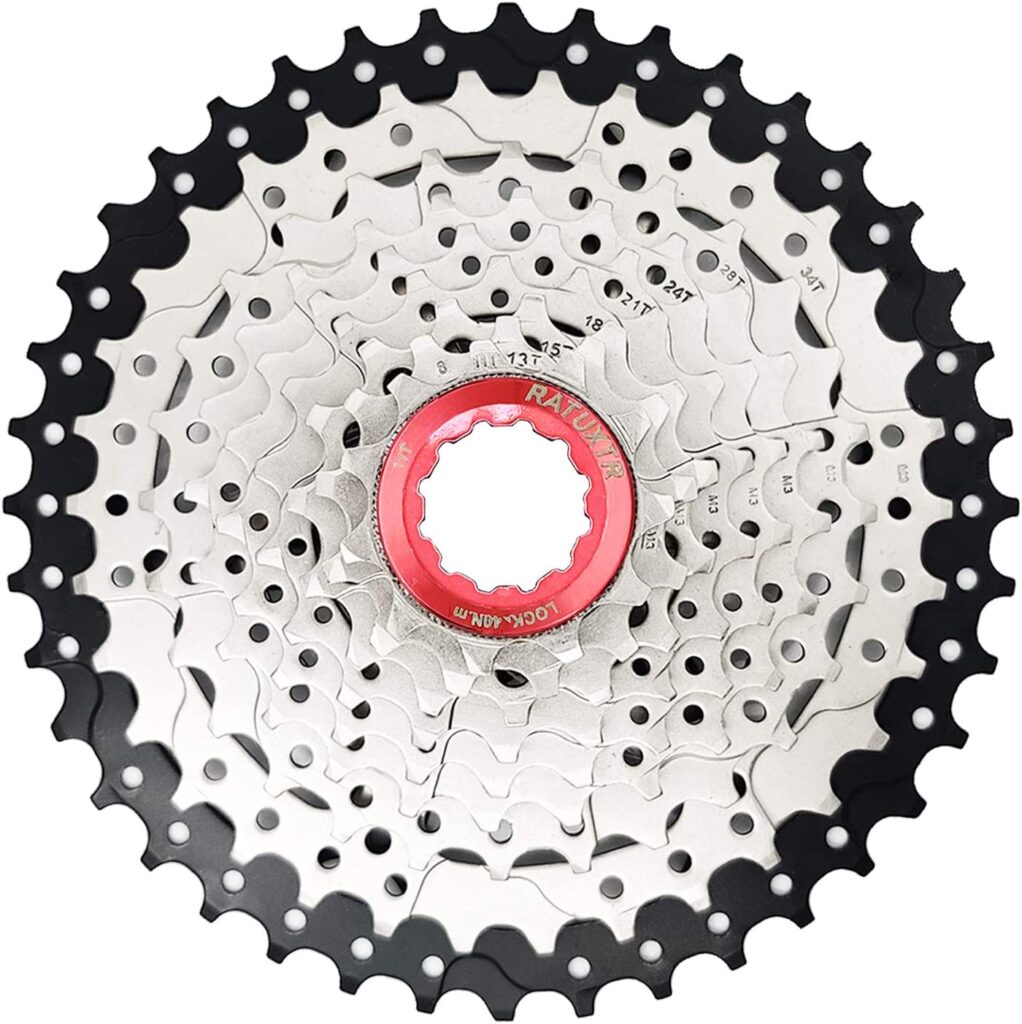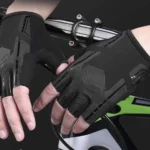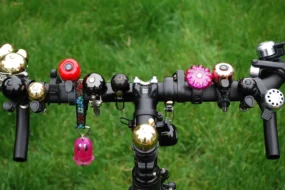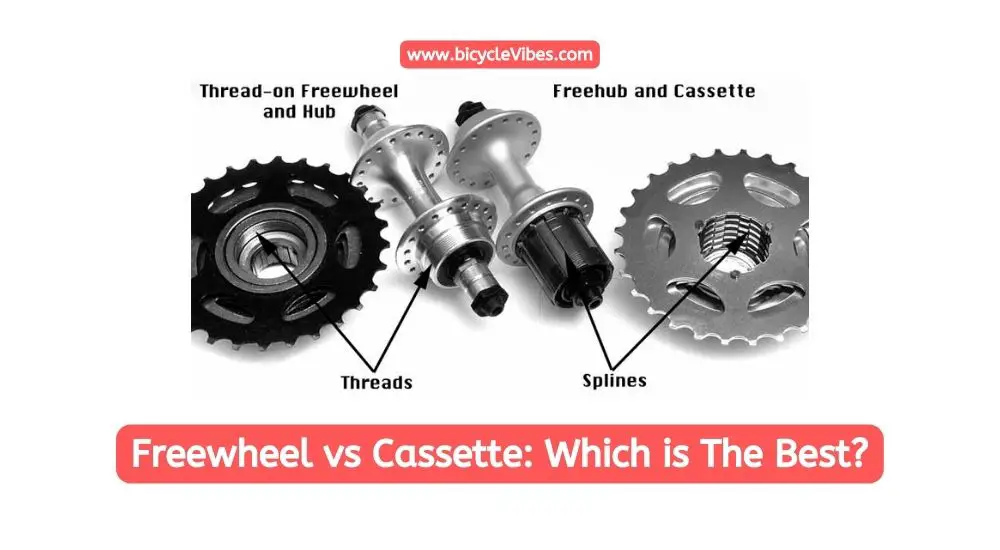
If you’re like many people, you may have been using the terms “freewheel vs cassette” interchangeably. But there is a difference between the two, and if you’re not sure which one you have on your bike, it can be easy to waste money on the wrong parts.
To clear up the confusion, let’s start by explaining the difference between freewheels and cassette freehubs.
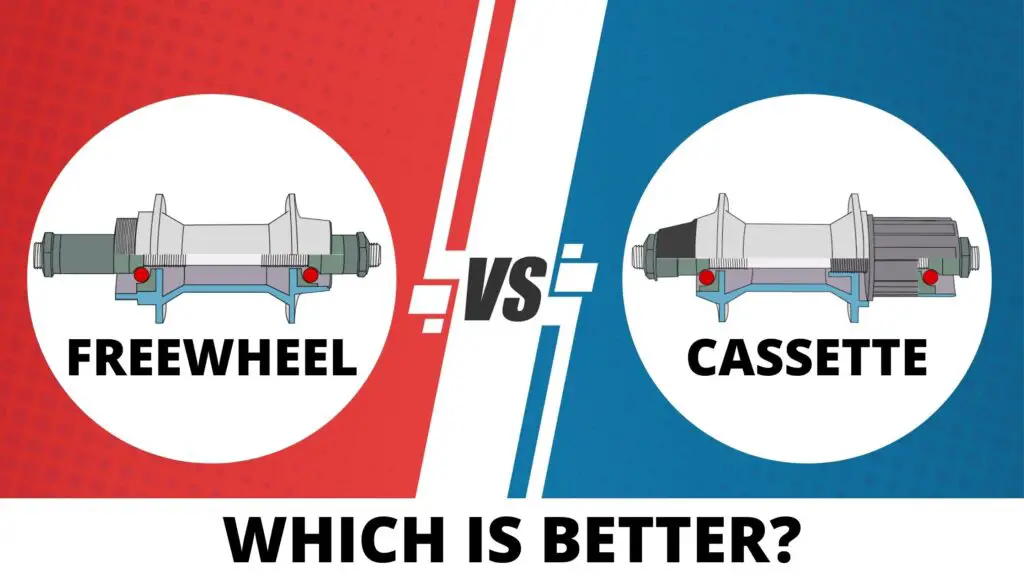
Table of Contents
Freewheels
In the past, traditional rear hubs had a set of standardized threads that allowed a freewheel or sprocket cluster to be screwed onto them. This made it possible for any brand of freewheel to be mounted on any brand of hub. However, the extractor splines on the freewheel do not turn when the sprockets are spun backwards.
Freewheels come with sprockets that are bolted together and cannot be easily swapped out. This system was common on bikes made through the late 1980s.
Cassettes & Freehubs
In recent decades, the conventional threaded rear hub has been replaced by the cassette freehub. This newer style hub has proven to work exceptionally well and has become the new standard for modern road bikes. One of the significant differences between a freewheel and a freehub is the location of the coasting mechanism.
The freehub incorporates the ratchet mechanism into the hub body, allowing for the replacement of the sprockets only, rather than the entire ratchet mechanism. Unlike the freewheel and threaded hub system, the lockring splines will turn with the sprockets when spun backward. Additionally, many freehubs will have a distinctive bulge on the right end of the hub barrel.
While freewheels come with sprockets bolted together and cannot be easily swapped out, cassettes come with loose sprockets that have spacing between them. Some cassettes do come with sprockets held together with bolts or rivets, but these are just for easier mounting. They can be removed without affecting functionality, allowing for individual sprockets to be swapped.
Do I have one of them?
If you’re still unsure about whether you have a freewheel or a cassette on your bike, you can identify it by its appearance. Freewheel axles are typically recessed slightly into the axle and may show some splines, but not as many as a cassette. In contrast, cassettes are typically flush with the face of the gears, and you can see the splines, appearing as the rays of the sun around the perimeter. The freewheel axles are recessed deeper into the body, around the axle itself, not the gear, like a cassette.
It’s worth noting that not all freehubs have a bulge on the right end of the hub barrel. However, whenever you see this bulge, you can be sure that it is a cassette freehub.
Buying and Changing Sprockets
It’s crucial to pay attention to the type of sprockets when buying and changing them to ensure that the correct ones are used. Freewheels are screwed onto the rear hub, while cassettes are just slid onto the hub splines and held in place with a special lockring. The very end of the rear hub differs for each type, making it easy to identify the standard even before removing the sprockets.
Related Q&A
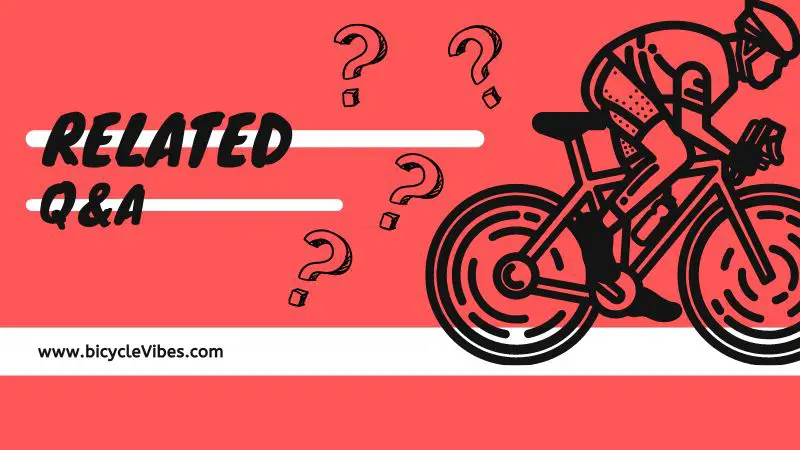
Q1: What is a freewheel?
A1: A freewheel is a type of bicycle hub that allows the rider to coast without pedaling.
Q2: What is a cassette?
A2: A cassette is a type of bicycle gear system that allows the rider to change gears by moving the chain between different-sized sprockets.
Q3: How do freewheels and cassettes differ?
A3: Freewheels are an older technology that is typically found on older or lower-end bikes, while cassettes are a newer technology that is found on most modern bikes.
Q4: What are the advantages of using a cassette?
A4: Cassettes offer smoother shifting, more gear options, and are generally lighter and more durable than freewheels.
Q5: What are the disadvantages of using a cassette?
A5: Cassettes can be more expensive and may require special tools for maintenance and repair.
Q6: What are the advantages of using a freewheel?
A6: Freewheels are simple and easy to maintain, and can be less expensive than cassettes.
Q7: What are the disadvantages of using a freewheel?
A7: Freewheels offer fewer gear options and may not shift as smoothly as cassettes.
Q8: Can you replace a freewheel with a cassette?
A8: It is possible to replace a freewheel with a cassette, but it may require changing other components of the bike as well.
Q9: Can you replace a cassette with a freewheel?
A9: It is generally not possible to replace a cassette with a freewheel, as the hub design is different.
Q10: Which is better, a freewheel or a cassette?
A10: It depends on the rider’s needs and preferences. Cassettes offer more options and are generally considered to be better for performance, while freewheels are simpler and more affordable.



